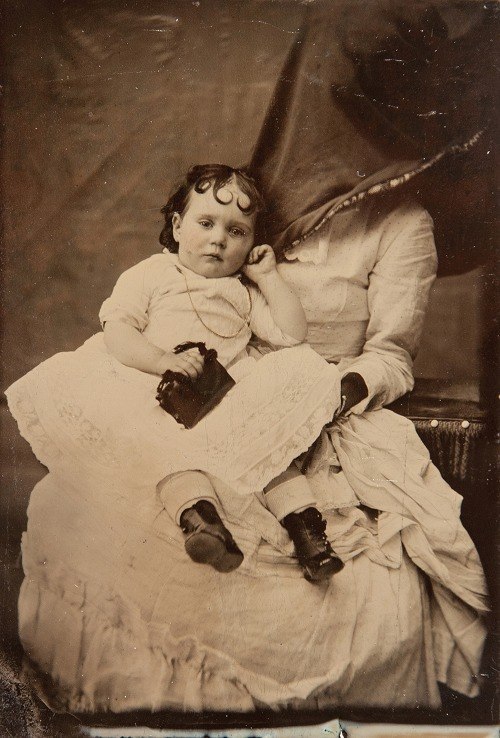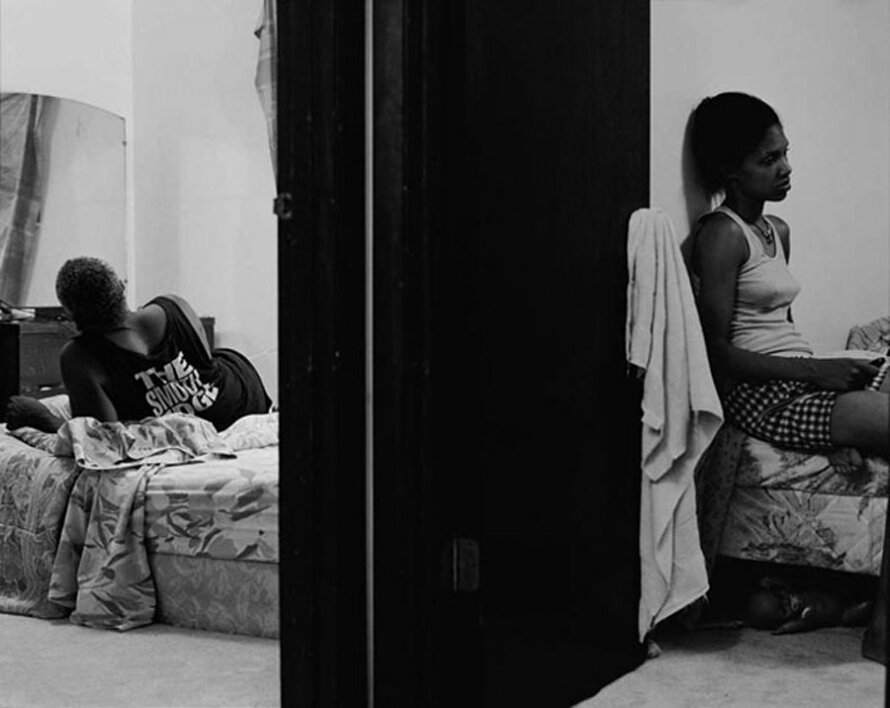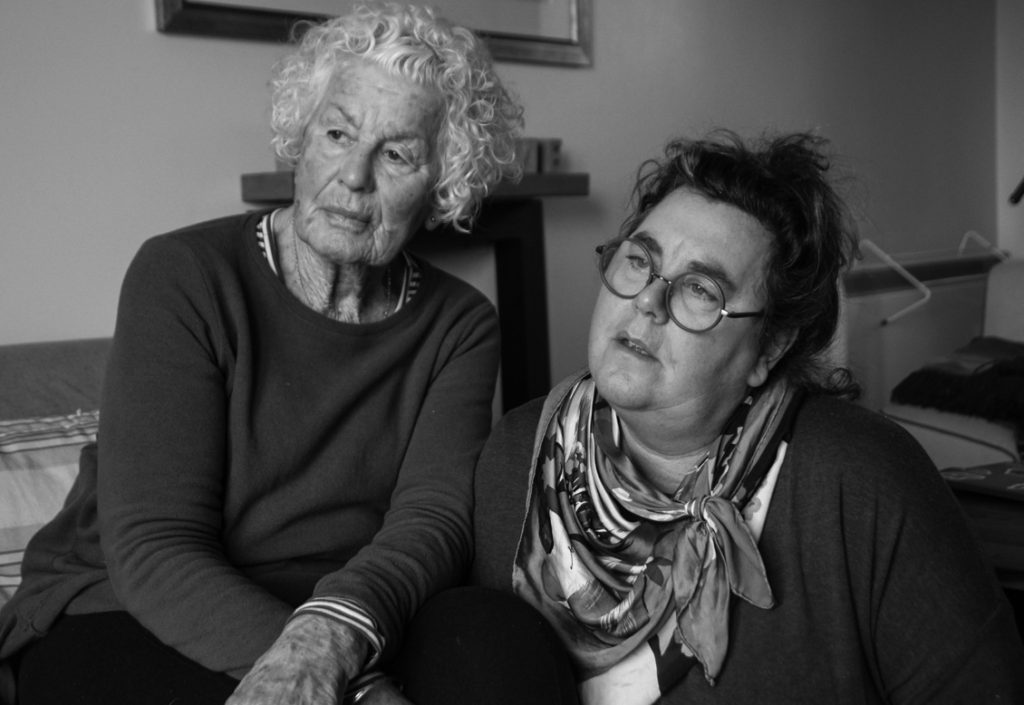In what ways has LaToya Ruby Frazier represented identity between generations of women?
“It’s imperative we tell our own stories, controlling the framework, content and narrative” (LaToya Ruby Frazier, 2018)
This essay will explore how female identity has been represented through different generations of women. The hypothesis will draw upon the work of LaToya Ruby Frazier , particularly the work around Braddock and the social, economical and political changes that her hometown has had on her family. For example, research into her celebrated body of work, The Notion of Family, published in 2014 has enabled me to gain different perspectives on the role of feminism in art, the influence of female role models within family structures, and how women are represented in photography specifically. Growing up with a single mother and solely women in my upbringing has influenced my interest in my essay topic and led to my research in the representation of women in art and historical family roles. In her book The Notion of Family, Frazier uses poignant images of multiple generations of women in her family. These images highlight the history of her family and the plight they have faced as working-class African American women in an ex-mining town in rural America. The intimate, deeply personal portraits in this photobook create thought-provoking sentiments about the ideas of womanhood, women in the family and female identity throughout multiple generations. She considers her work a “conceptual documentary”,(Harris, 2014), and she uses her work not only to show that of familial relationships, but “as a vehicle for both social change and aesthetic possibility: beauty, in her work, does not preclude protest any more than education presumes awareness.”. These ideas further influenced my interest in Frazier’s work, and this is something that I like to use in my work. Frazier’s documentarian approach creates more insightful images, with heavily contextual images detailing the struggles of those whose voices often go unheard: not only women but working-class, African American women.

To respond to my selected artists, I am using archival images as well as new images of myself, my mother and my grandmother, drawing inspiration from family records. I plan to compare feeling, pose and appearance between new and archive images (taken from photo albums), to produce a thoughtful commentary on how female identity changes through three generations. I will explore this mainly through photomontage and collage, a method that I have used successfully in the past and want to develop in this project. Subsequently, in this essay, I will discuss the historical representation of women: in art, photography, and families and reference my key artist and her work about female identity and generations of women.

Throughout many periods of history, both in society, culture and art, the portrayal of women, the ‘role of a woman’ and family structures are presented in many different ways. Throughout historical western society, women have been consistently presented as the primary caregivers, both for their children, for the home and their husbands. This can be seen in sculpture and art dating back to as early as the 1500s. Women in art around his period and up until the late 20th century were presented as fragile and soft and as a “passive object, and the receiver of an active male gaze” (Kaufman 2005). For example, in the Italian renaissance, women were, like women of the middle ages, denied all political rights and considered legally bound to their husbands. Women were considered merely housewives, and if not married were not allowed to live independently. During this period, women were presented in art as vain, and self-obsessed figures were presented only for the pleasure of the male onlooker. For example, in Giovanni Bellini’s 1515 painting “Young Woman at her Toilette”, the nude female subject is presented as a symbol of wealth, with Bellini using rich green tones and the feature of a Venetian landscape to her left. This painting connotes a sense of calm and softness, which further highlights the way women were represented during the renaissance period.

With the invention of photography in the early 19th century, the representations of women were seemingly unchanged. Male photographers dominated the art, with the majority of images extremely serious and posed. Family portraits at this time were the same: mothers were pictured holding their children, with the father standing above with a stern look on his face. Even this layout highlights the place women had in society in the time in victorian society, at the time of the invention of photography. The identity of women represented in these early images was that of a mother, a housewife, and an inferior figure to her husband, who loomed above her, somewhat threateningly, demonstrating power and control. Another sub-genre of these early portraits was the so-called “Hidden Mother Photography”, which was a genre that included portraits of young children, with their mother present, but hidden in the photograph. This genre grew more popular due to the long exposure times of early cameras, and the need for mothers to hold their children still for long periods. These images are somewhat chilling – despite their seemingly innocent nature, they show how mothers were seen as objects and merely useful for parenting – the concealment of the mothers’ bodies and faces creates a sense that “The mothers seem to have been aiming to create an intimate bond between the child and the viewer, rather than between themselves and the child.” (Nagler 2013). This subscribes to the mother wanting to please the viewer, creating a perfect picture of her child for those looking at the image, a polished ideal of the relationship and identity that exists between a mother and child. This manipulation shows the early presence of the male gaze and its influence on representations of female identity in photography.

Moving into the 20th century, as women had more and more freedom and a louder voice within society, many female photographers began to document their identity in their own words – not in the words of men who have controlled the media and the role of women within the media for decades. The male gaze has become more and more redundant in recent years, with developments in all of the areas of the visual arts that lean towards more of the female gaze – images that do not solely exist for the visual pleasure of the male onlooker – “Woman as image, man as bearer of the look”. Instead, as the influence of feminism has become more visible in photography, many female photographers have produced images and series that depict their own identity, for themselves, or the viewing of other women – these can be powerful, as they depict female voices within the arts that have been silenced and altered for centuries. For example, Carrie Mae Weems created an iconic photograph which represents an intimate portrait of motherhood, through an understated kitchen depiction of a mother and daughter with makeup. This depiction of a mother-daughter relationship contrasts violently with the silenced mothers in the “Hidden Mother” portraits of Victorian mothers, whose relationships with their children were censored and removed from the images. The image below highlights the struggle that women in visual art, especially photography, have experienced to create work that represents them as the women they are today.

African – American photographer LaToya Ruby Frazier’s images are crucial pieces in the development of the modern media’s representations of women. She considers her work closely related to sociology, documenting the struggles of working-class African American American women. The media and its’ representations are central to Frazier’s work. The fact that Frazier considers her work sociological is important to the context of her images – her work is not journalistic, as she seeks to separate her narratives from that of the media, drawing a line between her personal experiences, and the media’s representation of such: “If I were a journalist, I would not be able to edit and frame my photographs. I look for a narrative or context that will amplify the voices of the marginalised…and the current issues we face.” (Frazier 2018). This quote of Frazier’s signifies how taking a sociological approach to her subjects allows her to tell her own story, without bias and as she wishes – not as society wishes, for a journalist. In her work, Frazier not only documents social issues but the generations of women in her family. In her highly acclaimed project, “The Notion of Family”, she creates unique documentary images in which she features herself, her mother and her grandmother. Through her work, Frazier herself documents her own family and their surrounding stories. She seeks to dismantle discriminatory ideas of women and disadvantaged communities like her own in Braddock, Pennsylvania and creates unfiltered and stark images of her female relatives, which create an eye-opening reality of her family’s experiences. Frazier’s work subsequently has strong links to feminism – as a woman she uses her work as a tool of resistance against stereotypical representations of black women. Her images are heavily contextualised, each subject with their own stories and experiences told within the project, dismissing the female stereotype of vanity, and shallowness, as projected by the male gaze: “An endlessly reproductive imitation of surface” (Phelan 1993). Instead, Frazier’s imagery appeals to the female gaze, rejecting surface-level depictions of women, and creating her own narrative. Her modern depictions of female identity and marginalization are opposite to the historical depictions mentioned above – Frazier disproves the historical preconceptions of women, and creates a modern display of female power and experience in her work.

This image of Frazier’s is from “The Notion of Family” project. The photograph is black and white, which creates stark contrast – for example, the middle has a large concentration of black tones. This creates a clear division between the two parts of the composition which could signify a dividing factor in the family which drives the two subjects apart. This could be a reason why Frazier chose this composition. This black-toned area of the photograph matches the black of the t-shirt of the subject to the left, creating a link between these two areas of the picture. This image uses the rule of thirds which can be seen in all parts: on the left the start of the black doorframe, creating the first third, the whole of the doorframe creating the centre third, and the rest of the image to the right creating the last. The focal point in this image is the door, which creates a high contrast with the different tones of the white towel. It could be said that the inclusion of separation in this image, with the door, could reference separation between generations – it may signify turbulence within their relationship. This separation is intriguing, as it could have many different meanings. It is possible that the photographer composed her image in this way to force the viewer to question what they think about the photograph, and what they think the work relates to. The composition raises questions about the posing of the image, and the context, something personal to Frazier and her mother. Additionally, The exclusion of faces and the body language of the two subjects could signify tension between the two characters or unsettled feelings. The inclusion of dark spaces in this photograph suggests trouble or problems within the family – in this context the plight of Frazier’s family as former steel miners, suffering the consequences of a failed industry. Within the image, there is a sense of nostalgia, helped by the presentation of the two subjects but also the aesthetic qualities: it was shot on film and in black and white which creates a more sentimental image of family. As seen throughout “The Notion of Family”, Frazier’s use of a film camera and “20th Century documentary aesthetic” (Frazier 2014) is used to document the lives of three generations of women, whose lives “parallel the rise and fall of the steel mill industry”. Frazier uses film and ‘old-fashioned’ methods to relate her work to the time in which the steel-milling industry began to fail, the late 20th century. The collapse of this industry had a direct effect on its workers, leaving them without income and subsequently developing severe health problems. By using photographic processes popular at the time, Frazier creates a link between the surface-level elements of her photograph the technical processes), with the plight of her subjects.

Overall, Latoya Ruby Frazier’s project “The Notion of Family” is a powerful display of female identity, documenting the plight of African American women in modern America. Her work represents generational identity with unfiltered images of her family, unravelling the stereotypes of women seen historically: through art, racism, the media, and sexism. This influences Frazier’s sociological approach to her work, examining the contextual problems behind her work instead of purely aesthetics. Frazier’s unique approach to her work has therefore influenced my project: rather than looking purely at technical things such as composition and framing in my image, although still important, I have begun to arrange and compose my images in a way that creates a narrative – creating intimate images of myself and my family. These images tell a story of lineage, generational change and identity. In my project, like Frazier, I have sought to create meaningful portraits of women, delving below surface-level stereotypes.



This image of my own is heavily influenced by the work of LaToya Ruby Frazier. It was carefully composed using the rule of thirds: the first third is comprised of the mirror and its’ wall, with the reflections. The middle third perfectly frames the first subject’s shoulders, making her the focal point of the image. The right third then frames the last subject. This composition to the right of the image isolates the two subjects in their separate parts of the photograph – this is contrasted with the left of the image, in which the mirror shows them together. The two subjects have different viewpoints and gaze in different parts, created by the reflections of the mirror: to the left, the subject is looking through the mirror towards the camera, suggesting a sense of looking inward or self-reflection. In the centre, the second subject is looking directly at the camera, but in the mirror, she gazes away. The subjects are looking in opposite directions, but as mother and daughter, I think the inclusion of a mirror in this image centralises the idea of generational identity, especially between women: historically women were seen as vain and self-centred, and including a mirror in my work has re- identified a mirror as a symbol of identity and similarity between two women.
Bibliography
Bischoff, C (2010). Masterpieces of the Picture Gallery. A Brief Guide to the Kunsthistorisches Museum, Vienna, https://artsandculture.google.com/asset/young-woman-at-her-toilette-giovanni-bellini/dQE6qBYljWU39A, accessed 1 February 2023
Curl, J (2022), Women’s Photography as a Tool of Resistance, https://hyperallergic.com/765431/womens-photography-as-a-tool-of-resistance/, accessed 5 February 2023
‘Hidden Mother Photography’ (2018) Wikipedia, https://en.wikipedia.org/wiki/Hidden_mother_photography, accessed 30th January 2023
Hirsch, M, (1997) Family Frames: Photography, Narrative and Postmemory. Harvard University Press, Massachusetts.
Harris, J (2014), The Paris Review, https://www.theparisreview.org/blog/2014/10/07/the-notion-of-family/, accessed 30th January 2023
Hughes, K (2013). Early Victorian Family Portraits and the Disappearing Mother, https://www.telegraph.co.uk/culture/photography/10475137/Early-Victorian-family-portraits-and-the-disappearing-mother.html, accessed 31st January 2023
Jansen, C (2017) Girl on Girl: Art and Photography in the Age of the Female Gaze, Laurence King Publishing, London.
Kaufman, A (2005), Undoing The Patriarchy in Art, https://serendipstudio.org/sci_cult/courses/beauty/web4/akaufman.html, accessed 30th January 2023
Mulvey, L (1973) Visual Pleasure and Narrative Cinema in Screen, 1975.
Monet, C (1875) Camille Monet and a Child in the Garden in Argenteuil,[digital image of painting], www.arthistoryproject.com, accessed 31st January 2023
Phelan, P (1993)Unmarked: the politics of performance, Routledge, Oxfordshire.
Representation of Women in Art Through the Ages, Google Arts and Culture, https://artsandculture.google.com/usergallery/representation-of-women-in-art-through-the-ages/jwKisGWJM5SWKA, accessed 31 January 2023
‘Timeline of Women in Photography’ (2018) Wikipedia, https://en.wikipedia.org/wiki/Timeline_of_women_in_photography, accessed 31st January 2023
“Women in the Renaissance”, in The Italian Renaissance, Sparknotes, https://www.sparknotes.com/history/european/renaissance1/section9/, accessed 31 January 2023.
